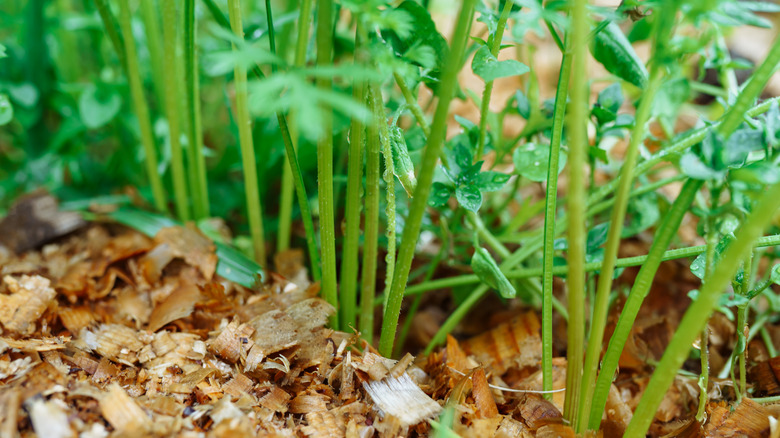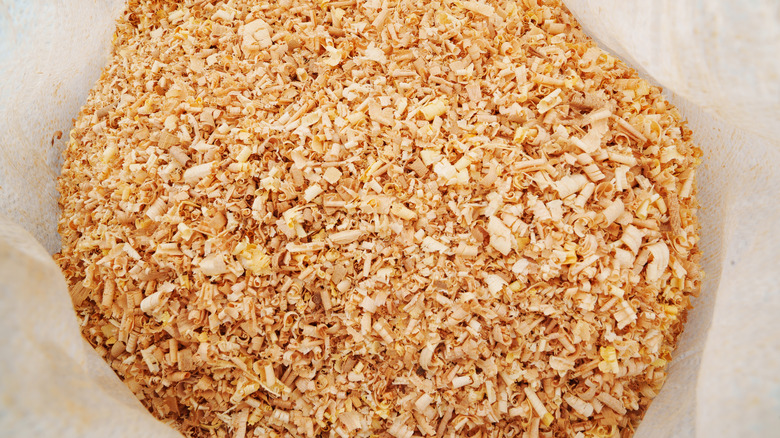Save Workshop Wood Shavings To Help Your Garden Thrive
If woodworking and gardening both happen at your house, you can combine those pastimes for a stronger garden. Leftover wood shavings are a great mulch alternative: You'll cut down on waste and save money when you repurpose them.
Mulch has many different functions, but one of the main ones is to block weed growth. A layer of mulch creates a barrier that weeds struggle to grow through, so you'll have less weeding work and your plants will have less competition.
Wood shavings can help in exactly the same way: by creating a light-blocking layer that weeds aren't strong enough to grow through. Common types of wood that make great mulch include cherry, maple, oak, and cedar.
These shavings may absorb nitrogen from your soil, giving weeds yet another challenge. However, nitrogen loss can cause problems for young plants, so this tactic works best with more established plants and shrubs in your garden. The good news is that as the shavings decompose, they'll eventually leave rich and healthy soil behind.
What different types of shavings can do
With that in mind, not all wood shavings are created equal. It's important to pay close attention to the type of wood in your workshop so your garden stays healthy.
Black walnut wood shavings have an added benefit: They contain a toxic chemical that's a natural weed killer. Just make sure not to let it get too close to your living plants. It's wise to use it on the edges of walkways or in driveways, rather than in the actual garden beds.
However, other kinds of shavings are less desirable. Yew shavings are too highly toxic and should be avoided. Yew and black walnut have natural toxins, but other toxins are human-made. Shavings from treated or processed wood, like pallets, old railroad ties, and particle board, are too contaminated for garden use.
That said, most shavings from woodworking will do just fine, and some (like cedar) will make your garden smell amazing when you add them. Use those shavings just like mulch in the early spring, to keep weeds at bay and help your garden thrive.

